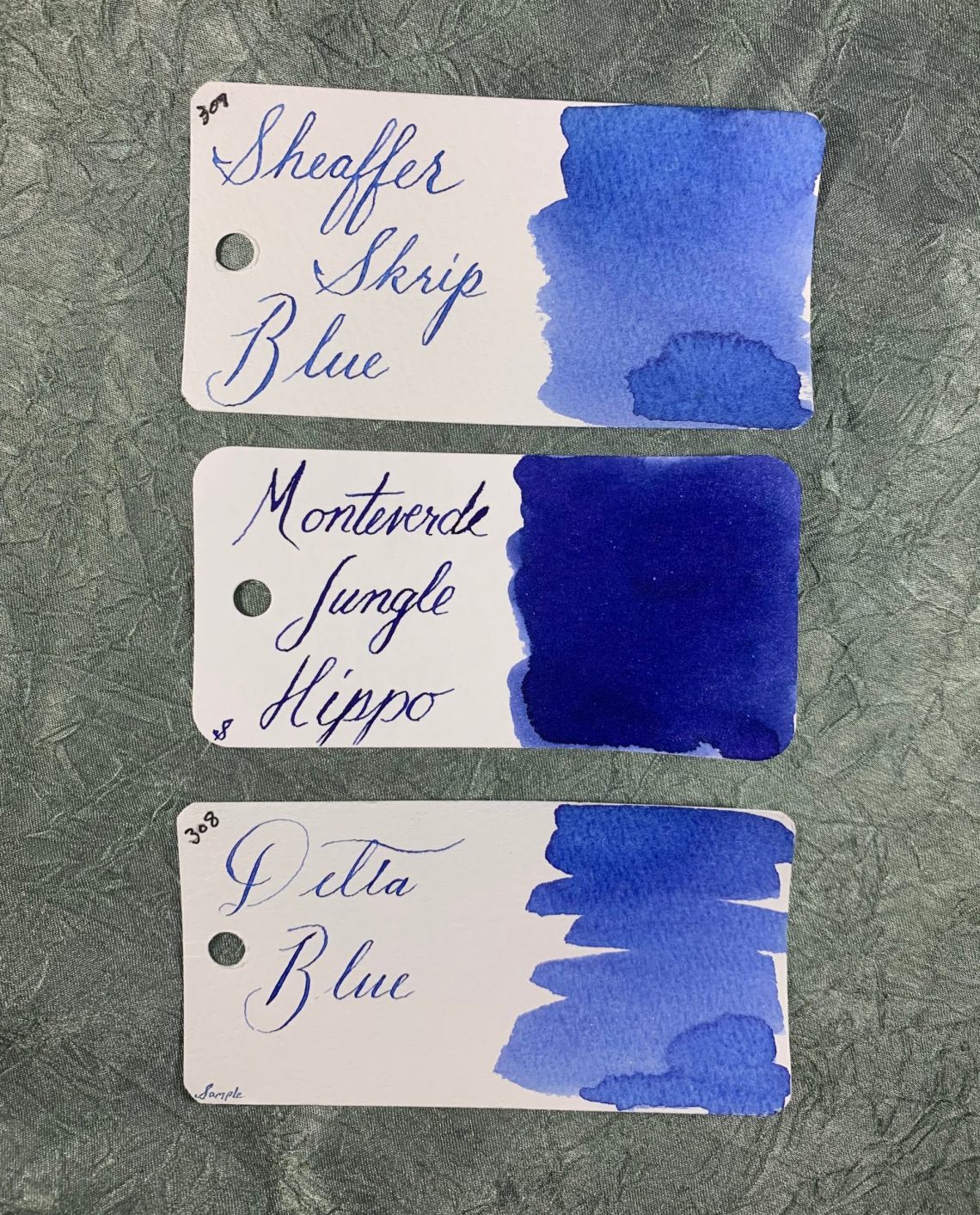Monteverde recently released their newest ink set – the Jungle ink collection. I’m always excited when Monteverde comes out with a new collection – ten new inks around a central theme all contained in a nice box with a magnetic closure. I have three of these collections and they store beautifully on a bookshelf!
* This photo is from Vanness Pens
The Jungle set – well, I haven’t been able to purchase this set yet. I’m pretty certain it has sold so quickly because the animals are incredibly cute.
I did purchase several samples of the inks and Ana sent me the rest of the samples so I could review them all together. So here we go! (These samples were all purchased from Vanness)
The first ink here is Monteverde Jungle Toucan. It is a slightly blue-leaning black, and not incredibly dark. It’s an average black ink.

Jungle Elephant is a dark blue-ish purple. It’s close to Kobe #32 but has more blue undertones.

Jungle Chameleon surprised me when I swatched it. It’s close to KWZ Brown Pink or a dark, slightly less pink version of Monteverde Rose Noir.

Jungle Crocodile comes in as a forest green with a touch of black sheen on the edges and is very close to Vinta Elysium. it could definitely work in an office setting as an adventurous black.

Jungle Zebra is a beautiful navy/blue-black. It looks greenish next to true blue inks and blue when it’s compared to greens. Lovely color.

Jungle Turtle is slightly lighter than Pilot Ebisu. I think it’s too light for me to use in most pens, but would be amazing in a highlighter pen. Also, it is absolutely my favorite illustration on the Jungle set!

Jungle Hippo is a medium blue in hue but darker than most blues I have in my library. I’m not typically a huge fan of blues like this but Hippo is dark enough to be pleasant. A touch of purple undertone helps!

Gorilla is an interesting orange-ish burgundy. It has a touch redder than Urushi Red. I did see some feathering on the Col-o-Ring card here which I will discuss more in a bit.

Jungle Giraffe has plenty of orange in the mix – very close to Papier Plume Red Beans and Rice. This ink had significant feathering on the swatch card but I love the color.

Jungle Lion is my favorite of the entire Jungle set. It also has an adorable lion on the bottle! It’s an interesting orange-yellow-brown mixture that is unique to my collection so far, like a lighter version of 3 Oysters Hwangto. I love how the ink color looks in writing – light enough to see the unique color but still dark enough to be legible.

Now to talk about the feathering I’ve seen in this set. Giraffe is by far the worst with Gorilla coming in second. Could there be an issue with the red dye in the batch? This is typically worse when I use a dip nib as I did here, so I’m hoping in a fountain pen it won’t show as much. But this is not something I’ve seen before with Monteverde inks!


The second batch of feathering inks in the Jungle set is Turtle and Zebra. The feathering is not nearly as obvious as Giraffe and Gorilla, but still concerning. Could Monteverde have changed their typical ink formulation here? Extensive testing will be in order along with contacting the company.



Overall, I love this set. I will be testing the feathering inks further and investigating what has happened. But between the adorable illustrations and the colors of Lion, Hippo, and Chameleon, I think the set is a great new one. If the feathering problems can be remedied, I would recommend purchasing the set wholeheartedly. As of this writing, an individual bottle or three would be the better call.

DISCLAIMER: Some items included in this review were purchased by me and some by the Well-Appointed Desk for the purposes of this review and I was not compensated to write this post. Please see the About page for more details.































